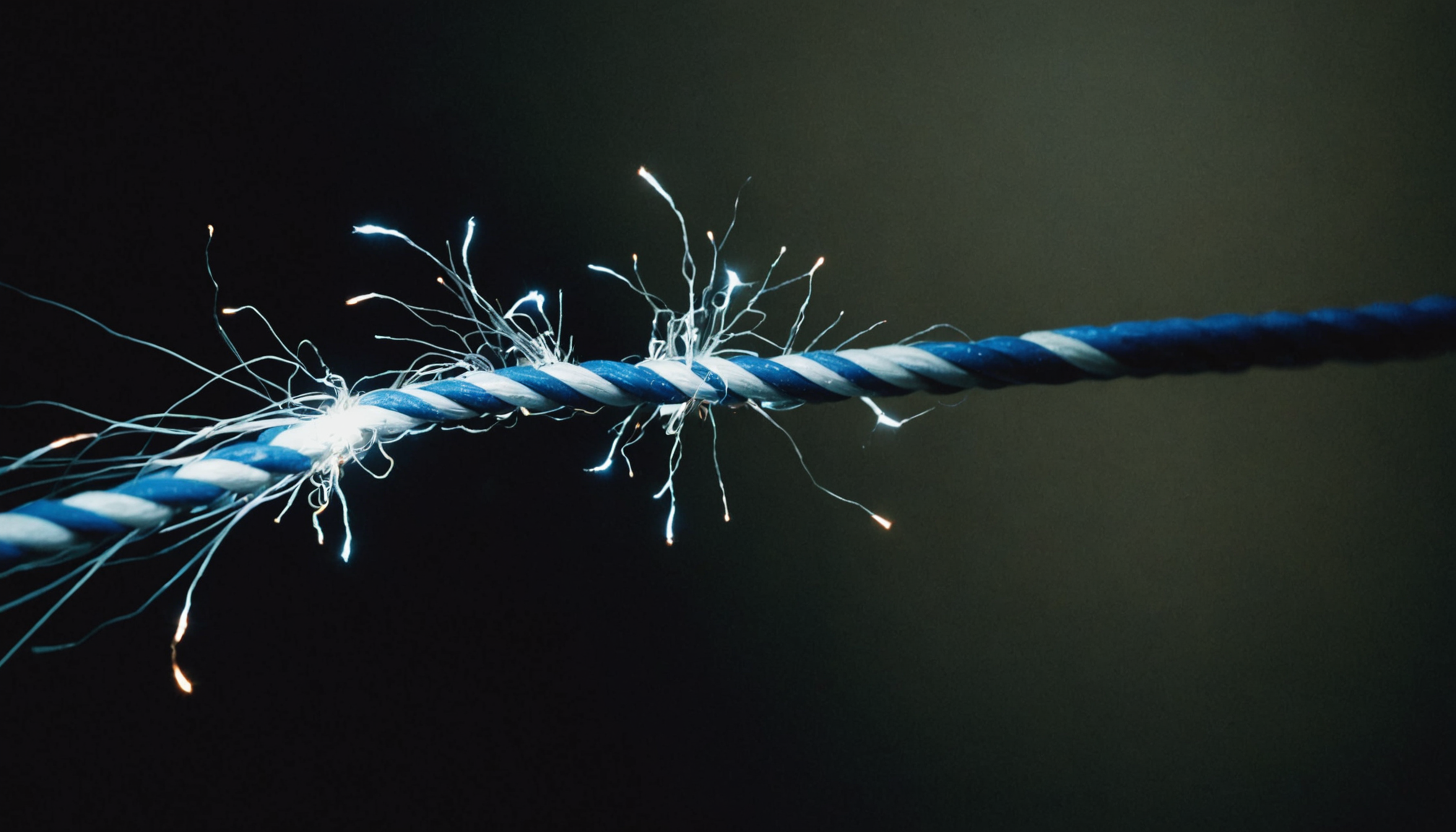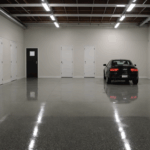Ensuring a safe home environment begins with the crucial task of identifying common electrical hazards. Awareness is key to preventing accidents that could otherwise lead to property damage, injury, or even fatalities. Many of these hazards are often overlooked, but recognizing them can significantly reduce risks associated with electricity.
One of the most prevalent electrical hazards is the presence of faulty wiring. Worn or exposed wires pose a direct risk of electric shock or fire. If your home is older or if you notice frequent flickering lights, buzzing sounds, or a burning smell, it may be time to have your electrical system inspected by a professional. Faulty wiring is not always visible, so regular checks can help detect issues that could escalate into serious hazards.
Another common hazard is the misuse of electrical outlets. Overloading outlets with multiple devices can lead to overheating and increase the likelihood of an electrical fire. Each outlet is designed to handle a specific load, and plugging in too many high-wattage appliances at once can exceed this limit. Consider using power strips with surge protectors to distribute electrical load more evenly and reduce risk.
Water and electricity are a dangerous combination, making water damage another significant electrical hazard. Ensure that appliances, outlets, and switches in wet areas like the kitchen, bathroom, and laundry room are protected with Ground Fault Circuit Interrupters (GFCIs). These devices can shut off power automatically in the event of a ground fault, thus preventing shocks.
Extension cords also frequently pose hazards, mainly when used improperly. They are designed for temporary use but are often used as permanent solutions, which can lead to overheating and potential fires. Inspect cords regularly for frays or damage, and avoid running them under carpets or through doorways where they can wear down quickly or become a trip hazard.
Below is a comparison table showcasing different types of common electrical hazards, their potential consequences, and preventive measures:
| Electrical Hazard | Potential Consequences | Preventive Measures |
| Faulty Wiring | Electric shock, fire | Regular professional inspections, immediate repairs |
| Overloaded Outlets | Fire | Use power strips with surge protection, avoid excessive load |
| Water and Electricity | Electric shock | Install GFCIs in wet areas, keep appliances dry |
| Incorrect Use of Extension Cords | Overheating, fire | Use temporarily, avoid damage, do not run under carpets |
A vigilant approach to identifying and correcting these common hazards will contribute significantly to maintaining a safe home environment. While awareness and preventive actions are essential, integrating them into your regular home maintenance routine ensures you can tackle potential risks before they become severe problems.
understanding circuit breakers and fuses
Circuit breakers and fuses are integral components of any electrical system, serving as the first line of defense against electrical mishaps. They are designed to protect your home from electrical overloads and short circuits by interrupting the flow of electricity, thereby preventing potential fires, appliance damage, or electric shock. Understanding how these devices work and the role they play can equip you with the knowledge to maintain a safer home environment.
1. Learn the Basics:
– Circuit breakers and fuses serve a similar purpose but operate slightly differently. Breakers can be reset after tripping, while fuses need to be replaced once they have blown.
– Circuit breakers are housed in a panel where all the electrical circuits of a building converge. A fuse, conversely, is an older technology often found in older buildings and serves the same protective role but in a more decentralized fashion.
2. Identify the Components:
– Locate your home’s main circuit breaker panel or fuse box. This is typically found in a utility room, basement, or garage.
– Inside a breaker panel, you’ll find switches labeled with the areas or appliances they control. In a fuse box, you’ll see fuses, which are small threaded bulbs, each protecting a specific circuit.
3. Understand the Operation:
– Circuit breakers automatically cut the power when the current exceeds a safe level to prevent overheating. If a breaker trips, it causes the switch to flip to the “off” position.
– Fuses contain a metal wire that melts when too much current flows through it, breaking the circuit and stopping the flow of electricity.
4. Responding to a Tripped Breaker or Blown Fuse:
– If a breaker trips, identify the position of the switch in the panel that is neither fully “on” nor “off.” Flip it fully to the “off” position and then back to “on.”
– For a blown fuse, unscrew it and replace it with one that has the exact specifications (e.g., voltage, amperage) to ensure system compatibility and safety.
5. Maintenance and Safety Checks:
– Regularly inspect your breaker panel or fuse box for signs of wear or damage. Look for scorch marks, frayed wires, or an acrid smell, which could imply overheating.
– Ensure that the circuit breaker panel or fuse box is accessible and not blocked by furniture or stored items, allowing for quick action in an emergency.
6. Recognizing Overloading:
– Be mindful of how many devices are plugged into a particular outlet or circuit to avoid overloading. Spread high-energy devices across different circuits and avoid running too many at once.
– Listen for buzzing sounds or observe flickering lights, which can indicate that the circuit is strained and may soon trip.
7. Seek Professional Assistance:
– If you experience frequent breaker trips or blown fuses, it may indicate a larger electrical problem. Contact a professional electrician to diagnose and address the issue.
By having a firm understanding of circuit breakers and fuses, you can not only react swiftly in the event of an electrical issue but also take proactive steps to prevent overloads and ensure the smooth operation of your home’s electrical system. This knowledge is crucial for maintaining safety and avoiding unnecessary damage and disruptions.
safe use of electrical appliances
When it comes to electrical appliances, safety must be a priority each time they are used. Proper handling and usage can prevent a wide array of potential hazards, thereby safeguarding both your family and your home. Here are a few essential guidelines to ensure electrical appliance safety:
Inspect Your Appliances Regularly: Begin with a visual inspection of your appliances. Look for frayed cords, damaged plugs, or any scorched connections, which can be signs of a pending malfunction. Regular checks can preemptively identify these warning signs before they lead to more serious issues such as electrical fires or shocks.
Follow Manufacturer Instructions: Adhering to manufacturer instructions is crucial for safe usage. Ignoring these guidelines can inadvertently lead to misuse, which is a leading cause of appliance-related accidents. These instructions often include specifics about the power source, usage limitations, and proper maintenance procedures—each integral for ensuring an appliance functions safely and efficiently.
Avoid Overloading Circuits: Each electrical circuit in your home is designed to handle a specific amount of amperage. Connecting too many high-wattage devices to a single outlet or circuit can cause it to overload, posing a fire risk. Use dedicated circuits for larger appliances like refrigerators, washing machines, and microwaves, and distribute other smaller appliances across multiple circuits to evenly balance the load.
Unplug When Not in Use: Appliances left plugged in while not in use still draw a small amount of electricity, which can result in unnecessary energy consumption and potential overheating. Unplug devices when they are not needed, especially those that generate heat like toasters, curling irons, and space heaters, to eliminate these risks.
Proper Ventilation: Many appliances produce heat as a byproduct of operation and require ample ventilation to prevent overheating. Ensure that devices like computers, televisions, and refrigerators have enough space around them for air to circulate freely. Obstructed or insufficient ventilation can lead to overheating and even cause appliances to catch fire.
Keep Electronics Away from Water: Water and electricity are a dangerous combination. Keep appliances away from wet areas such as sinks and bathtubs to minimize the risk of electrical shock. For added safety in places where water encounters are common, such as kitchens and bathrooms, use Ground Fault Circuit Interrupters (GFCIs) to automatically shut off electricity when a ground fault is detected.
Utilize Power Strips with Surge Protection: Surges in electricity can damage sensitive electronics and small appliances. To protect your devices, consider using power strips with built-in surge protectors. These not only allow additional devices to be plugged in safely but also safeguard against power spikes resulting from storms or fluctuating grid supply.
By embracing these safety practices for using electrical appliances, you can build a preventive strategy that minimizes risks and ensures the well-being of your household. A conscientious approach to appliance safety not only extends the lifespan of your devices but also significantly reduces the chance of accidents, promoting a secure and harmonious home environment.
childproofing your home
With children in the home, maintaining a safe environment for inquisitive little hands is of utmost importance. One of the first steps you can take is to ensure all electrical outlets within a child’s reach are safeguarded, notably in areas where children spend the most time such as living rooms, bedrooms, and playrooms. Outlet covers or caps are a simple yet effective solution; they are inexpensive and can prevent accidental electrical shocks by blocking access to the sockets.
Another critical measure is managing cords properly. Loose or dangling cords can not only be a trip hazard but also an enticing target for curious toddlers. To mitigate these risks, ensure cords are neatly and securely organized behind furniture or along baseboards. Cable management systems, such as cord concealers or wire covers, can be helpful here. These devices keep cords out of sight and out of mind for little explorers, preventing them from pulling or gnawing on wires, which could ultimately lead to severe injury.
Equally important is the placement of all household electronics and appliances. Keep items like lamps, chargers, and other small electronics on high shelves or secured surfaces away from the reach of children. This precaution prevents them from tugging on these devices or pulling them down, which could result in electrical hazards or physical injuries.
Moreover, for larger appliances that cannot be stored out of reach, such as televisions and computers, anchoring them securely to walls or stands is advisable. Stabilizing heavy devices reduces the risk of them falling over if a child tries to climb on or pull at them.
For homes with older or arthritic pets that could knock over or drag off cords, using similar protective measures of securing cords and anchoring appliances can help protect both the pets and the home’s electrical integrity.
Educating your children about electrical safety is another vital component. Encourage age-appropriate discussion about the dangers of electricity and why they must not touch or play with electrical outlets or devices. Supervision is always necessary, but instilling awareness in children provides an additional layer of safety.
Lastly, regularly inspect all safety measures and devices in your home to ensure they remain effective and undamaged. The security of outlet covers, the stability of mounted appliances, and the condition of cord management tools should all be assessed periodically. Conducting these checks can proactively prevent potential risks and ensure ongoing safety for your children in their everyday environment.
By implementing these childproofing strategies, you are contributing to a safe living space that prioritizes the well-being of your children while minimizing the risk of electrical accidents. Rather than seeing these measures as temporary solutions, view them as integral components of your home’s overall safety protocol.
emergency response to electrical accidents
In the unfortunate event of an electrical accident, having a clear and well-practiced emergency response plan is essential. Quick and informed action can minimize injuries and save lives. Here are the key steps to take if an electrical accident occurs in your home:
1. Do Not Touch the Person Directly: If someone has sustained an electrical shock, avoid direct contact. The person may still be in contact with the electrical source, which could transfer the current to you. Instead, turn off the power source from the circuit breaker if it is safe to do so.
2. Call for Emergency Services: As soon as possible, dial emergency services or 911. Professional medical help is crucial for dealing with electrical injuries, which are not always apparent immediately.
3. Use a Non-conductive Material to Separate the Person: If you need to move the person away from the electrical source and the power cannot be cut off immediately, use a non-conductive object like a wooden broom handle or a plastic chair to push them away from the source without risking your own safety.
4. Check for Responsiveness and Breathing: Once the person is safely away from the electrical source, check for consciousness and breathing. If the person is unconscious but breathing, place them in the recovery position while waiting for professional help.
5. Perform CPR if Necessary: If the person is not breathing or has no pulse, begin CPR immediately if you are trained to do so. Continue until medical professionals arrive.
6. Treat Burns Carefully: If the person has sustained burns from the electrical contact, cover these with a sterile, non-adhesive bandage or clean cloth to protect them from infection. Avoid using adhesive bandages or applying ointments, which can worsen the injury.
7. Monitor for Shock: Remain alert to signs of shock, which can include weakness, pale or clammy skin, and rapid breathing. Keep the person warm and comfortable, reassuring them while you wait for help.
Educating all family members on these emergency response steps can empower them to act purposefully and without panic in critical situations. Having lifesaving knowledge on hand can help prevent a bad situation from becoming worse and provides reassurance that your family is prepared.
Electricity is a powerful force that requires respect and diligent care. By recognizing hazards, practicing safe habits, and preparing effectively for emergencies, you can secure your home against potential electrical dangers. Prioritizing electrical safety not only protects your property but also ensures the well-being of your family, creating a safer and more comfortable living environment for everyone.


